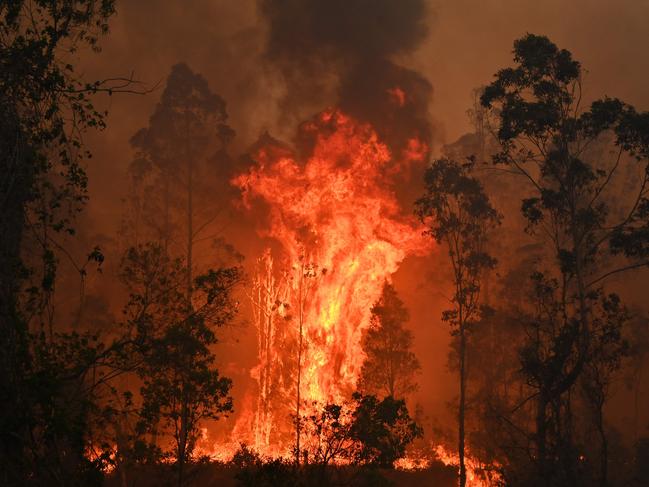10 ways climate change can make bushfires worse
Bushfires around the world are becoming more intense, more widespread and are happening more often. There are many reasons for this, and experts say most of them can be pinned on one thing: climate change.
Raging bushfires such as those which have destroyed large parts of Australia since September — along with California, Portugal and Spain in 2019 — have become more common in recent years.
Scientists say there are numerous ways in which climate change can make them worse.
Other factors have also fuelled an increase in the frequency and intensity of major fires, including human encroachment on wooded areas, and questionable forest management.
“The patient was already sick,” said David Bowman, a professor of environmental change biology at the University of Tasmania and a wildfire expert.
“But climate change is the accelerant.”
Fine weather for a fire
Any firefighter can tell you the recipe for “conducive fire weather”: hot, dry and windy.
No surprise, then, that many of the tropical and temperate regions devastated by a surge in forest fires are those predicted in climate models to see higher temperatures and more droughts.
“Besides bringing more dry and hot air, climate change —\ by elevating evaporation rates and drought prevalence — also creates more flammable ecosystems,” noted Christopher Williams, director of environmental sciences at Clark University in Massachusetts.
More fuel
Dry weather means more dead trees, shrubs and grass -- more fuel for the fire. “All those extremely dry years create an enormous amount of desiccated biomass,” said Michel Vennetier, an engineer at France’s National Research of Science and Technology for Environment and Agriculture (IRSTEA).
“That’s an ideal combustible.”

Change of scenery
To make matters worse, new species better adapted to semi-arid conditions grow in their place.
“Plants that like humidity have disappeared, replaced by more flammable plants that can withstand dry conditions, like rosemary, wild lavender and thyme,” said Vennetier.
“The change happens quite quickly.”
Thirsty plants
With rising mercury and less rain, water-stressed trees and shrubs send roots deeper into the soil, sucking up every drop of water they can to nourish leaves and needles.
That means the moisture in the earth that might have helped to slow a fire sweeping through a forest is no longer there.
More lightning
“The warmer it gets, the more lightning you have,” said Mike Flannigan, a professor at the University of Alberta, Canada and director of the Western Partnership for Wildland Fire Science.
At the same time, he noted that 95 per cent of wildfires worldwide are started by humans.
Weakened jet stream
Normal weather patterns over North America and Eurasia depend heavily on the powerful, high-altitude air currents — produced by the contrast between polar and equatorial temperatures —- known as the jet stream.
But global warming has raised temperatures in the Arctic twice as fast as the global average, weakening those currents.
“We are seeing more extreme weather because of what we call blocked ridges, which is a high-pressure system in which air is sinking, getting warmer and drier along the way,” said Flannigan.
“Firefighters have known for decades that these are conducive to fire activity.”
El Nino
In the southern hemisphere, the periodic — every two to seven years — weather cycle known as El Nino leads to reduced rainfall, warmer temperatures and increased fire risk in Indonesia and eastern Australia, especially the southeast. The current fires, however, are not influenced by an El Nino event.
Unmanageable intensity
Climate change not only boosts the likelihood of wildfires, but their intensity as well.
“If the fire gets too intense” as in Australia right now, and in Greece last summer -- “there is no direct measure you can take to stop it,” said Flannigan.
“It’s like spitting on a campfire.”

Beetle infestations
With rising temperatures, beetles have moved northward into Canada’s boreal forests, wreaking havoc — and killing trees — along the way.
“Bark beetle outbreaks temporarily increase forest flammability by increasing the amount of dead material, such as needles,” said Williams.
Positive feedback
Globally, forests hold about 45 per cent of Earth’s landlocked carbon and soak up a quarter of human greenhouse gas emissions.
But as forests die and burn, some of the carbon is released back into the atmosphere, contributing to climate change in a vicious loop that scientists call “positive feedback.”
* This report was originally published in November 2019
